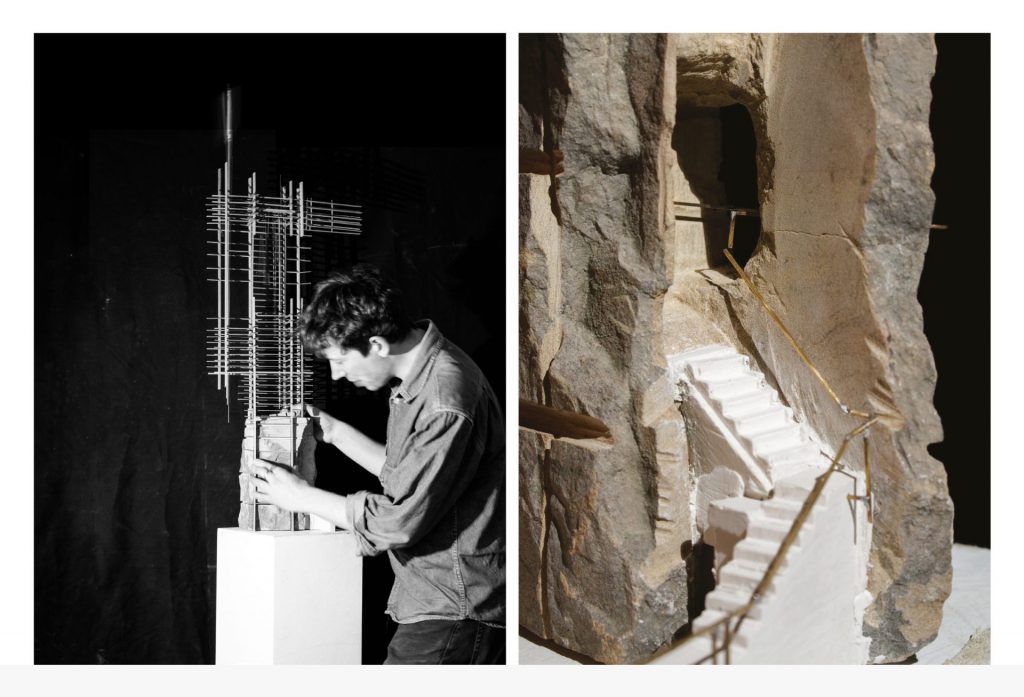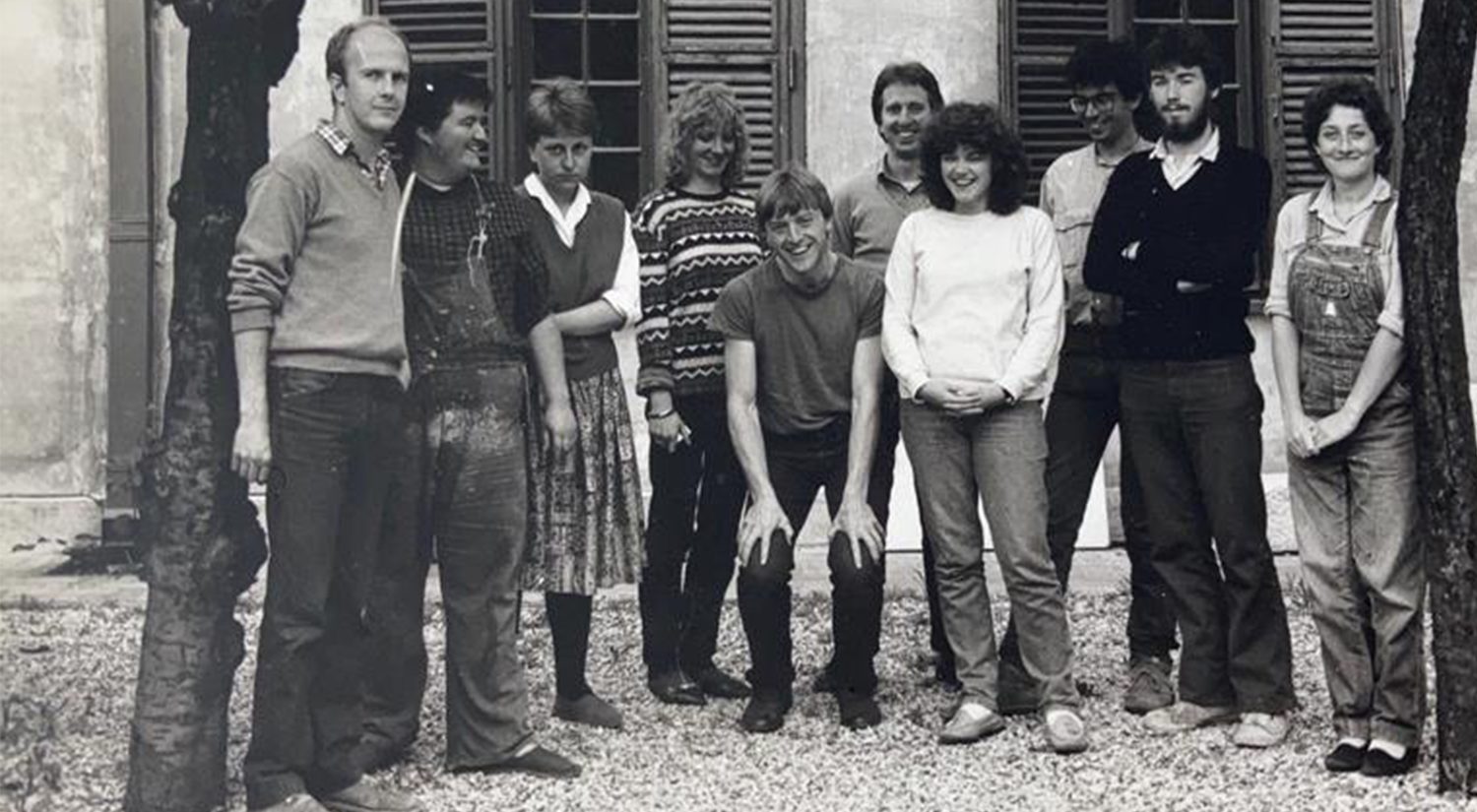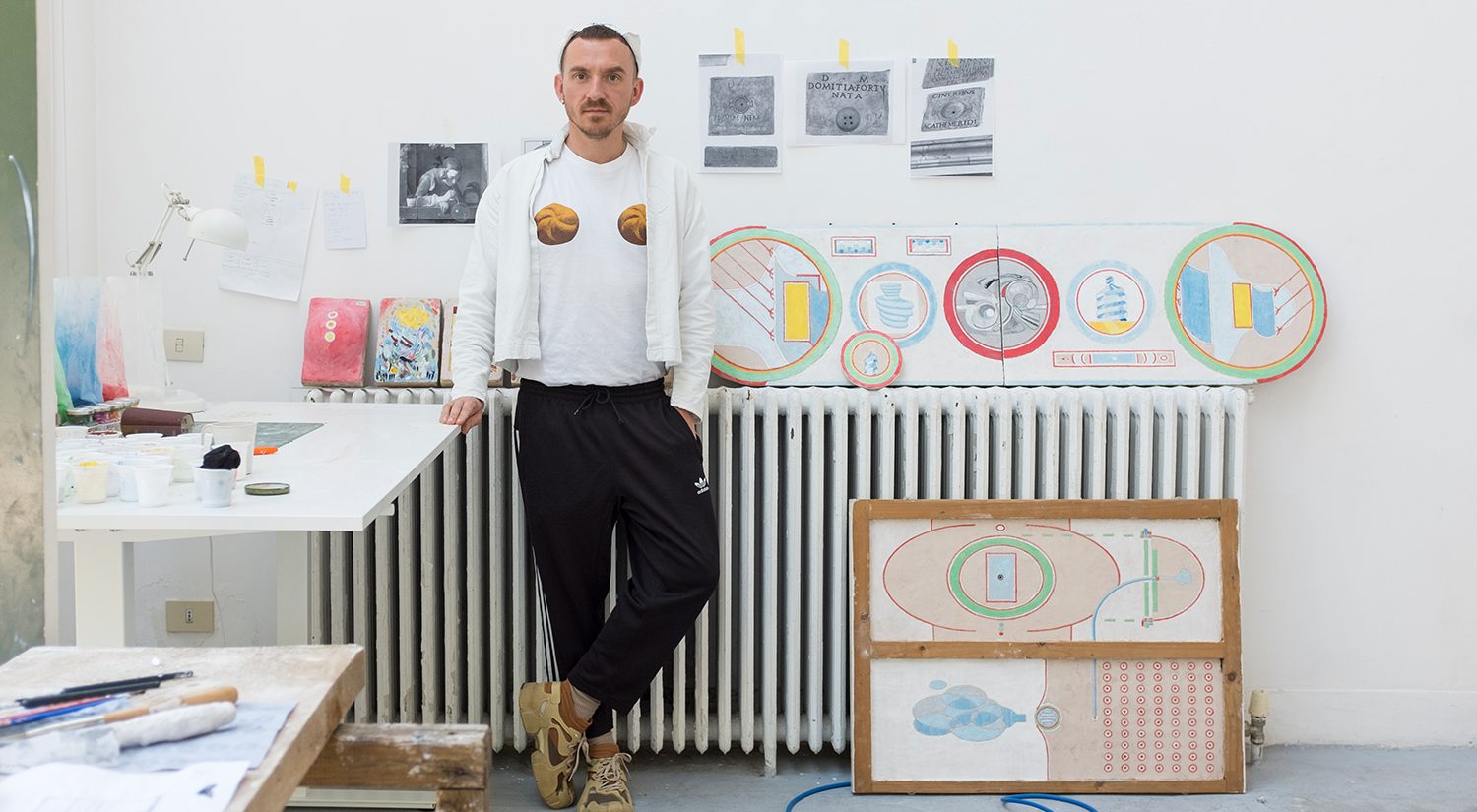An interview with Dominic Walker, Rome Scholar in Architecture, in which he speaks about the work he has produced during his residency at the BSR from September – December 2023, ahead of the Winter Open Studios.
Louis Kahn and Sigurd Lewerentz are two of the architects that you’re using as references for your project. What specifically interests you about their work?
I came to Rome to loosely follow the trips that two of my favourite architects took through Italy in the early and mid 20th century. They were both modern architects who worked in a tension between modernity and classicism in architecture. Louis Kahn undertook two well-known trips to Italy, first in 1928/9, and secondly when he spent a year at the American Academy in Rome in 1950-1951. The drawings he made on these tricks have stuck in my mind since my tutors, Jonathan Hill and Elizabeth Dow, first presented them to me while I was studying at the Bartlett in 2018. Kahn drew in a number of styles and mediums – from graphite to charcoal to watercolour, but all with an intensity that to me feels like it captures the emotional impact each view or building had on Kahn when he was there sketching. His paintings and drawings feel more akin to those of an artist rather than an architect – in my copy of ‘The Paintings and Sketches of Louis I. Kahn’, not a single plan or orthographic drawing is presented – it is a collection of perspective drawings.
Sigurd Lewerentz travelled to Italy in 1922 and took a series of esoteric black and white photographs that do not capture the monumental buildings of antiquity in their entirety, but instead focus on small details, bits of broken stones and sagging mosaic floors. These photographs also speak to me about Lewerentzs feelings of the things he experienced while walking through the ruins of the town of Pompeii, or Hadrians Villa.
I wanted to compare these drawings and photographs with two buildings by Kahn and Lewerentz – The Indian Institute of Management in Ahmedabad (IIM) by Louis Kahn, and St. Peter’s Church in Klippan by Sigurd Lewerentz. I have visited and spent time in both buildings, and they both had a strong emotional impact upon me. By comparing the buildings, trips and methods of drawing and photography my ambition was to understand how a particular way of capturing the emotional impact of buildings could influence an architect’s language in their work. Kahn literally built ruins – he ‘wrapped ruins around buildings’ as he famously stated – it wasn’t an academic pursuit, but a translation of the impact the light and shadow on monolithic brick forms had had upon him in Italy. Lewerentz never wrote about his work so we don’t know how academic his pursuit was, but the church of St. Peter feels to me so rich with symbolism that is expressed phenomenologically – through darkness, sloping floors and rusty columns for example – that it also feels like a building that is about emotion more than it is about rhetoric.
Thus, by following these two architect’s trips through Italy, and through trying to draw and photograph in ways inspired by them I have been hoping to develop my own architecture language that swells up from my feelings of the places that I have visited and loved, and hopefully one that can speak emotionally to others too.
My tutor, Jonathan, passed away very recently and I feel that so much of my time in Rome follows directly from the conversations that we have had over the last 6 years. I wanted to make a note to thank Jonathan, from the bottom of my heart, and to say how much I would have loved to have shared the sketches I’ve made here in Italy with him, back in London.

Your practice engages the past to investigate the present, and in your research in Italy you’re looking at Roman and Medieval architecture. Could you tell us more about this?
Following in the footsteps of Kahn and Lewerentz has taken me to important sites in the classical world, such as Paestum, Pompeii, Hadrian’s Villa and the Baths of Caracalla. I had thought at first that my trip was going to be very much about my interests in the recurring elements of classicism in modern architecture, but it has been the medieval buildings of Rome and Italy that I have kept returning to. I’ve travelled to Siena and San Gimignano, following in Kahn’s footsteps, where I was struck by the tight pattern of streets that flowed like streams and rivers into the central square in San Gimignano, or into the basin of the Campo in Siena. In Rome, I have visited the Basilica of San Clemente several times, where I have made many drawings of the two crypt levels with structural pillars that crash through the vaulted roofs from the subsequent churches above. There is a stream that runs through the roman dwellings here, two floors below ground, and it takes me straight to Lewerentz’s church of St. Peters, where the baptismal font is formed from a conch shell suspended above a fissure in the brick floor, with water flowing below. I have stood there in San Clemente and wondered whether Lewerentz would have also stood down there and also been equally captivated by that subterranean stream flowing through a void in a soft and plastic flowing brick floor.
The medieval buildings of Rome are intensely plastic – the brickwork feels molded and sculpted organically, and elements of classical buildings are often embedded in walls or somewhat collaged to form arcades. To me the classical world strived towards perfection, it was an architecture of great stone posts and beams, and brickwork construction was often concealed. The medieval buildings on the other hand feel intensely human to me, they are imperfect, they collage whatever is available and often the accept the necessities of their construction. They remind me so much of Lewerentz’s church, and of how much the roughness of the brickwork and darkness of the interior has stuck in my memory.











